The History of Fredericksburg, TX
Fredericksburg is one of the most traditional and prettiest German towns in the US! Nestled in the heart of Texas Hill Country, our lively German village is known for its authentic German architecture, traditional cuisine and biergartens, world-class live music, and one of the most authentic Oktoberfests in the US.
Founded in 1846 by a small group of German pioneers, the community of Fredericksburg is deeply rooted in their German heritage and have stayed true to their traditions over the years. Here’s the history of how Fredericksburg, TX became a city and the vibrant German-inspired tourist destination it is today.
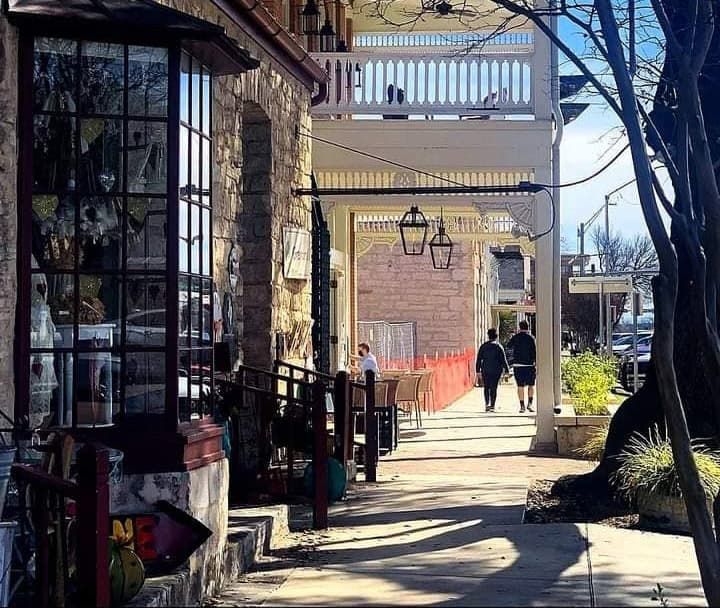
1846
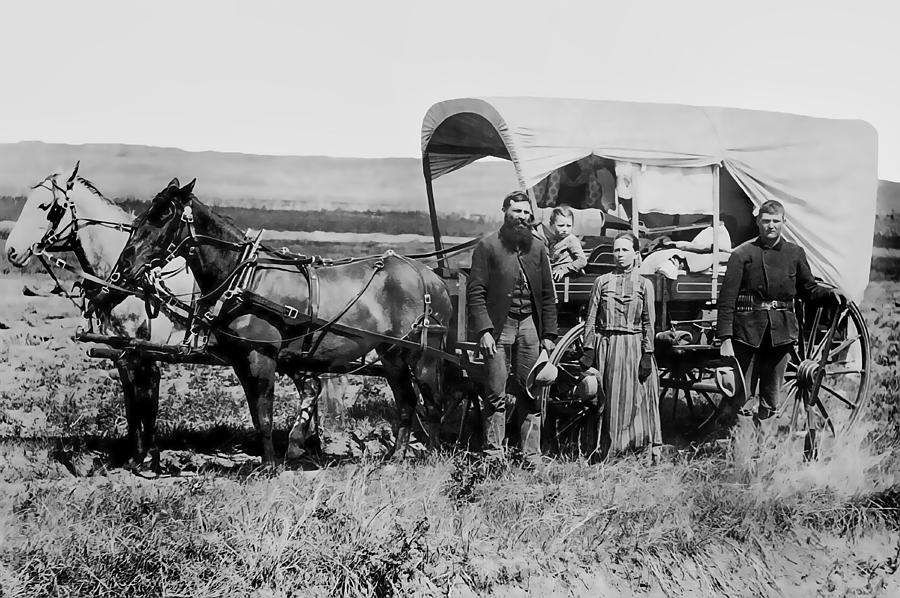
In the late 1700s, the infinite Texas plains were prime hunting territory for the Comanche Native American tribe. After the Texas Revolution (1835-1936) and through the 1840s, the Comanche Indians still dominated the southern plains, presiding over Hill country in an effort to keep out the Spanish forces.
German-Texan culture had already begun when Frederick Ernst acquired land near Austin in 1831, and in 1845 the Adelsverein (The Society for the Protection of German Immigrants in Texas) assisted thousands of German immigrant families to settle in the remote areas of Central Texas.
In 1846, John Meusebach set out from the German settlement of New Braunfels in search of a second settlement for the influx of German immigrants arriving in Texas. He discovered a prime location nestled between two creeks four miles north of the Pedernales River, naming the new settlement after the honored Prince Frederick of Prussia – Fredericksburg, Texas was founded. 10,000 acres of land was purchased, and 125 German settlers traveled from New Braunfels to Fredericksburg by wagon, each receiving 10 acres of farm land and one town lot to build a home.
1847
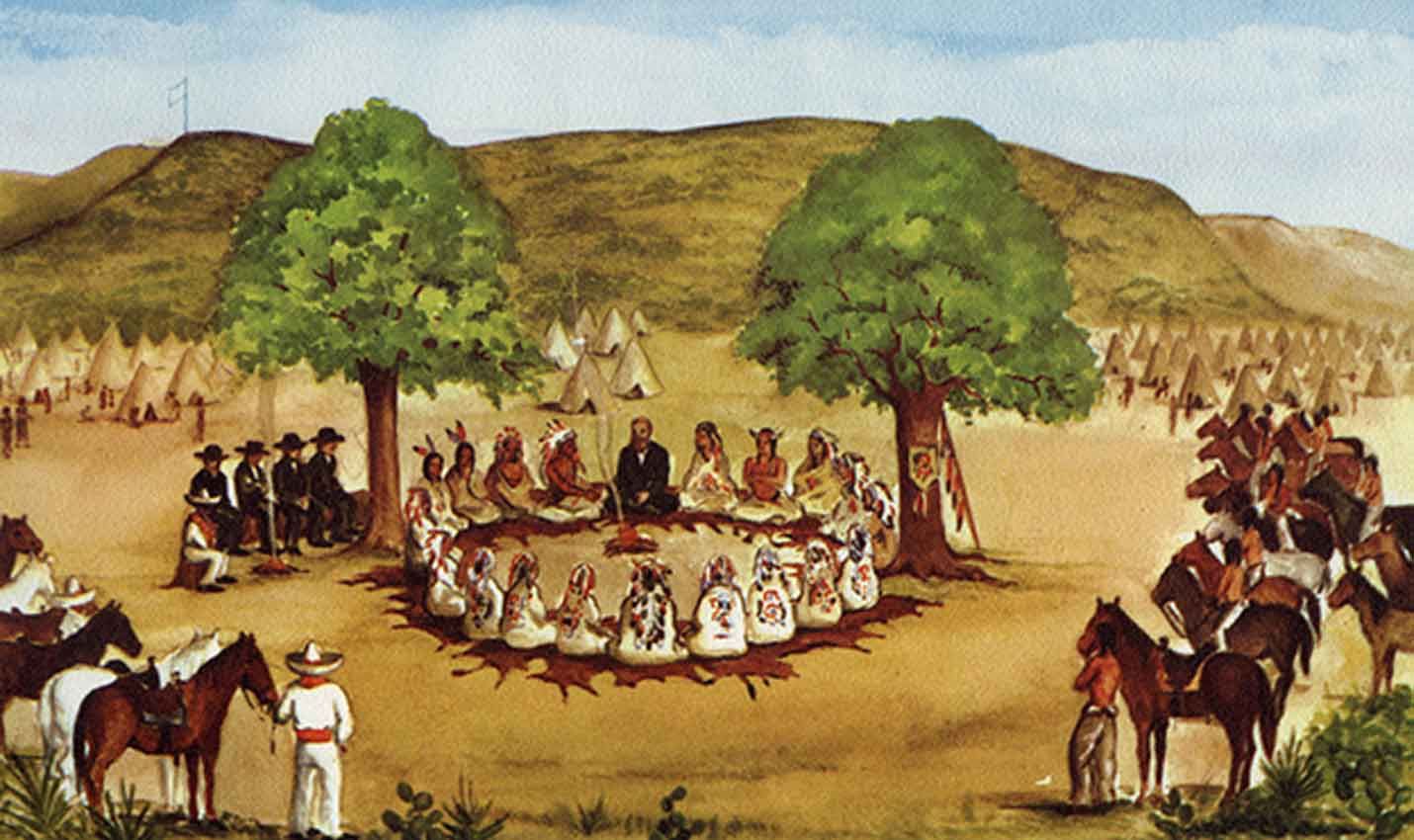
On May 9, 1847, Meusebach met with the head chiefs of the Penateka Comanche tribe to secure a code of peace between the German settlers and the Comanche Indians to share the land – “a treaty of peace and friendship”. The Meusebach-Comanche Treaty is the only unbroken and lasting peace treaty with Native Americans in the history of the US and can be found on display at the Texas State Library in Austin.
According to local tradition, the Comanches communicated by smoke signals and fires on the hills during the treaty negotiations and the tradition is celebrated each year at the annual Fredericksburg Easter Fires pageant. Today, the Marktplatz on Main Street is home to several bronze “Lasting Friendship” statues commemorating the signing and success of this historic treaty.
1847
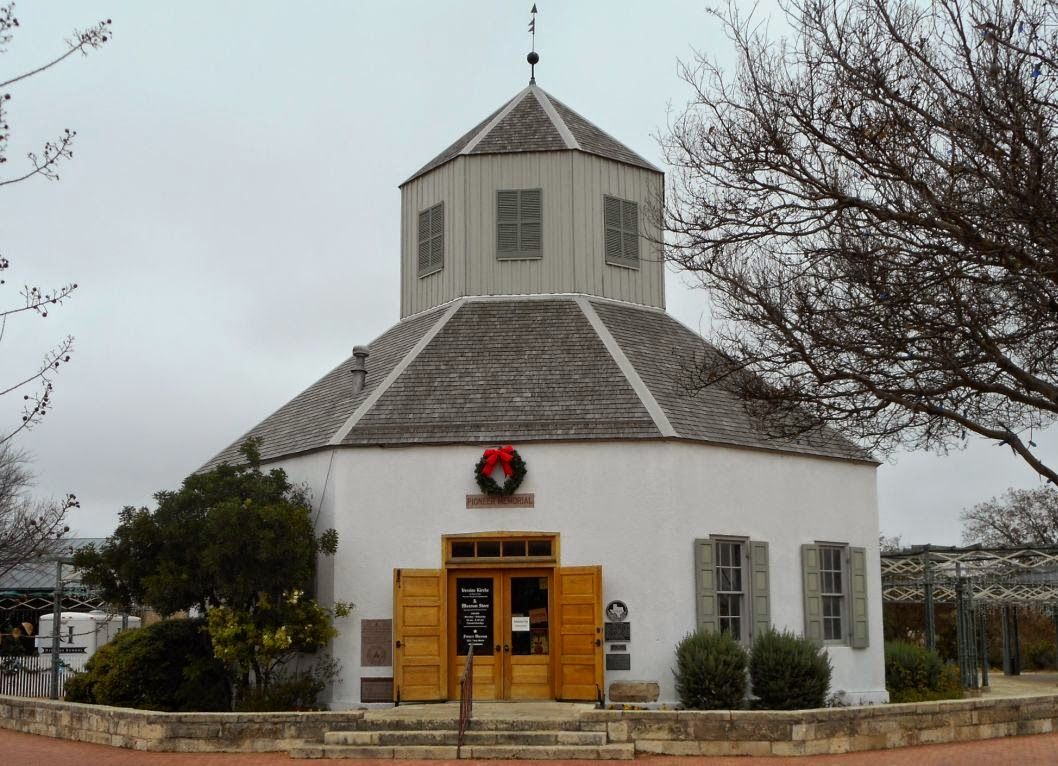
In the summer of 1847, after the signing of the peace treaty, the first public building – Vereins Kirche – was built in the middle of Main Street Fredericksburg. The octagonal building was modeled after a German chapel and constructed using the German Fachwerk method, serving as a social hall, church, and school.
In 1897, the original building was torn down and a stone replica was built in 1936 in a more convenient location, just in time for the Texas Centennial celebrations. Today, Vereins Kirche is open for tours with a collection of Fredericksburg artifacts, photographs and historic accounts of Fredericksburg’s fascinating history.
1848
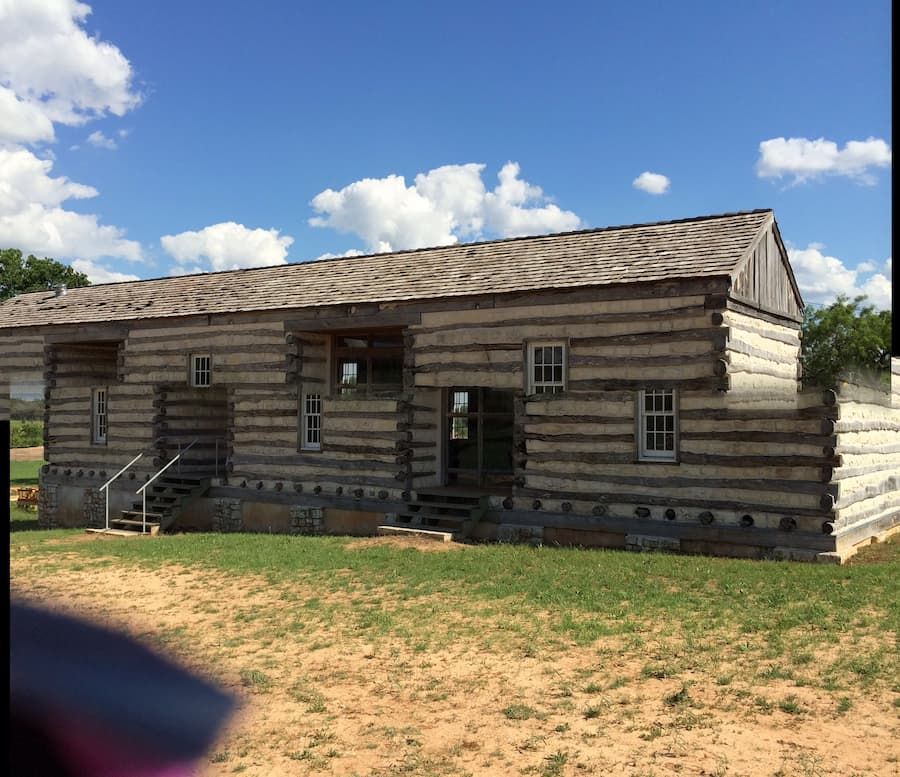
In 1848, Fort Martin Scott was built along Barons Creek, the first frontier fort and US Army Post in Texas active from 1848 to 1853. The fort was guarded by the Texas Rangers and served as a first line of defense between the Comanche tribe and German settlers, as well as protection for the wagon trails traveling to the western gold mines. The Confederate States Army occupied the fort briefly during the Civil War and as the frontier moved west, the fort was abandoned, sold as a farm, and later purchased by the City of Fredericksburg.
Today, Fort Martin Scott is managed by the Texas Rangers Heritage Center, a 12-acre complex on Hwy 290 near Fredericksburg, built to preserve the heritage of the Texas Rangers and honor those who serve. The heritage center is a top historic attraction in Fredericksburg with original buildings, a nature trail along Barons Creek, self-guided walking tours and festive events including living history reenactments, chuckwagon dinners, cowboy breakfasts and live entertainment.
1849
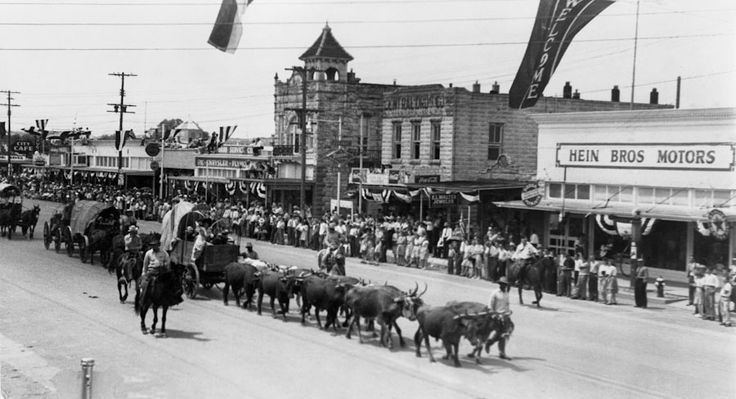
In 1849, Jacob Luckenbach moved his family from Fredericksburg and settled along Grape Creek, 10 miles southeast of Fredericksburg. A general store was built and the town of Luckenbach was established as a trading post. The historic Luckenbach Dance Hall was added to the small town in 1871 and the town population grew, however by the 1960s Luckenbach was virtually a ghost town.
In 1970, Hondo Crouch discovered the small town of Luckenbach, with Waylon Jennings putting Luckenbach on the musical map with his 1977 hit song “Luckenbach Texas”. Today, Luckenbach is a legendary music mecca with epic festivals in the iconic dance hall, and classic picker circles under the towering 500-year old oak trees.
1850
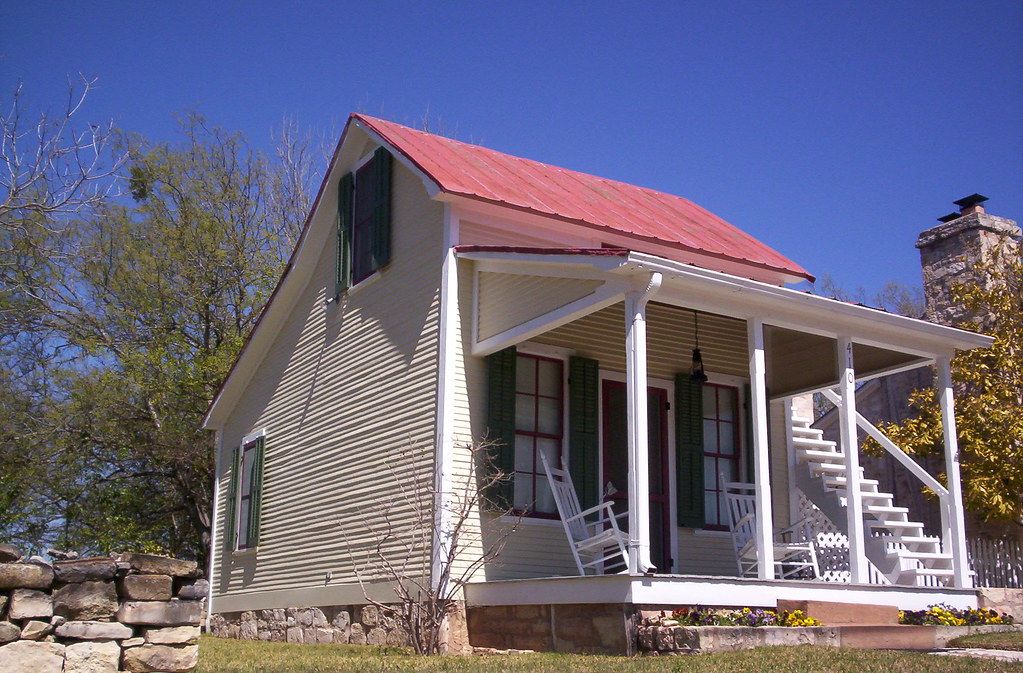
The intention was for the German immigrants to have farmland to work and a town lot to build a home, however the workload required the farmers to live on the land. Rural families would work the land during the week and travel into town on the weekends to pick up supplies, socialize in the saloons, and attend Sunday morning church, but sleeping quarters were required!
More than 100 “Sunday Houses” were built in Fredericksburg between the 1850s and 1930s – small and simple homes with one room downstairs, a sleeping loft upstairs, an outdoor staircase, and front porches for socializing. Constructed with the German Fachwerk method of a timber frame filled with bricks or stone, Sunday Houses are unique to Fredericksburg and a special part of our German heritage.
Today, a self-guided tour of the Fredericksburg Historic District will guide you past Fredericksburg’s historic buildings and beautifully restored Sunday Houses, or book a stay in a 110-year old vintage and lovingly updated Sunday House on Fredericksburg Main Street – a step back in time in style and comfort!
1881
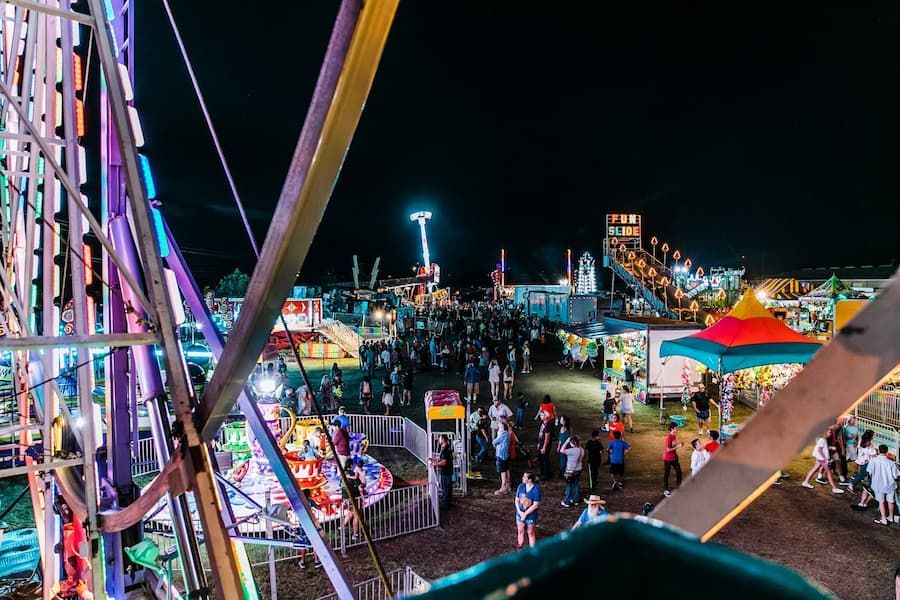
The Gillespie Town Fair is the longest running, never-interrupted, county fair in Texas dating back to 1881. The fair was hosted on the Braeutigam Farm at Fort Martin Scott from 1881 to 1889, with the old barracks serving as the exhibit hall and the officers’ quarters a dance hall. The fair later moved to an uptown location, then onto the Gillespie County Fairgrounds in 1892. The first county fair in Texas is still held today on the third weekend of every August.
1937
A little known fact – there’s a secret to Fredericksburg’s street names! The street names were unofficial and changed a number of times, until the local Lions Club took on the project of permanently naming the streets of Fredericksburg in 1937.
Here’s the secret – the cross streets east of the Courthouse spell ALL WELCOME (Adams, Llano, Lincoln, Washington, Elk, Lee, Columbus, Olive, Mesquite, and Eagle), the cross streets west of the Courthouse spell COME BACK (Crockett, Orange, Milam, Edison, Bowie, Acorn, Cherry, Kay). We know you will!
1963
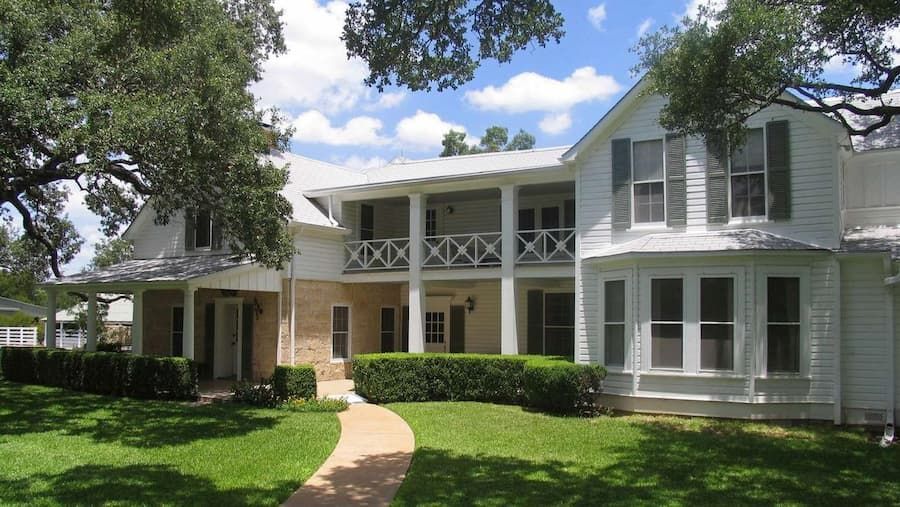
The 1963 election of the United States’ 36th President, President Lyndon Baines Johnson, put Fredericksburg on the map and boosted tourism to the Texas Hill Country. The Lyndon B Johnson National Historical Park is home to the LBJ Ranch, the birth place, ranch house, and final resting place of President Lyndon Johnson, and lies only 20 minutes from Fredericksburg in Stonewall, Texas.
Today, visitors can take free tours of the ranch and “Texas White House”, driving tours of the estate, and experience the history and heritage of Texas Hill Country at the Sauer-Beckmann Living History Farm at Lyndon B Johnson State Park & Historic Site.
2022
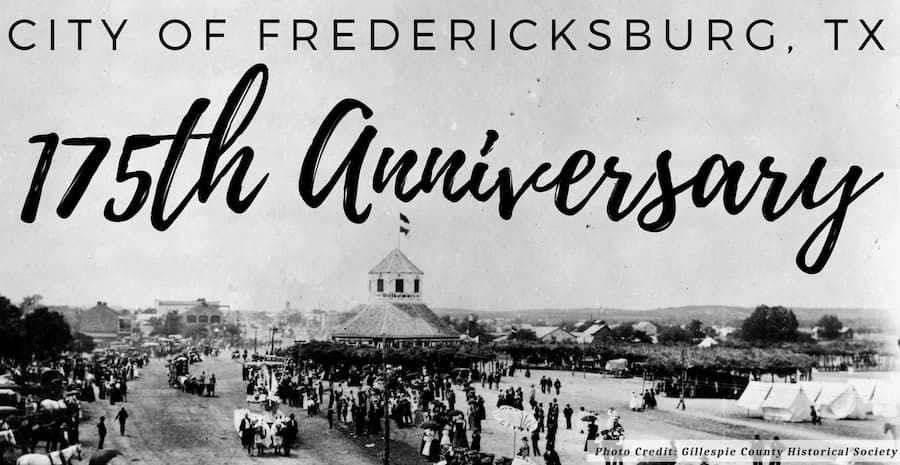
Fredericksburg’s 175th Anniversary Grand Finale Celebration took place on May 9th, 2022, after a year of parades, festivals and celebrations. History lovers have over 150 historical points of interest to discover in Fredericksburg’s National Historic District, or step back in time for a hands-on experience or our rich German heritage at a local museum.
2022
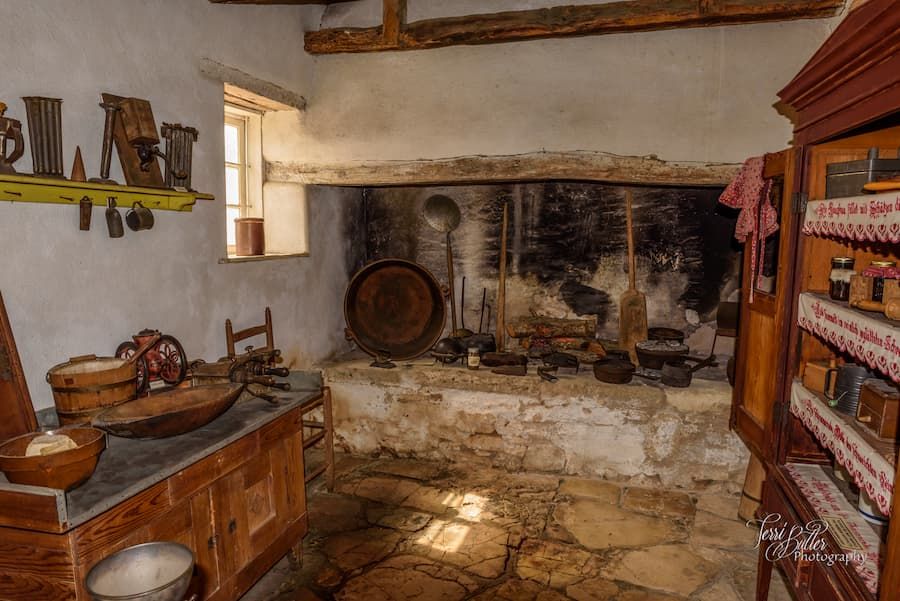
The Fredericksburg Pioneer Museum is a historical site and museum preserving some of Fredericksburg’s top historical attractions and displaying over 30,000 artifacts to explore the lives of the early German pioneers in Texas Hill Country. The three-acre museum complex features German artifacts from the mid-19th century including craftsmen’s tools, a blacksmith shop, cooking utensils, and 11 historic buildings.
Visitors can book a walking tour of the Vereins Kirche (1947), Kammlah Buildings (1849), Dambach-Besier House (1869), Fassel-Roeder House (1876), Patton-Haebig House (1897), Schandua House (1880s), Walton-Smith Log Cabin (1880s), Fredericksburg Volunteer Fire Fighter Museum (1904), Weber Sunday House (1904), Arhelger Bathhouse (1910), and White Oak School (1920s).
2022
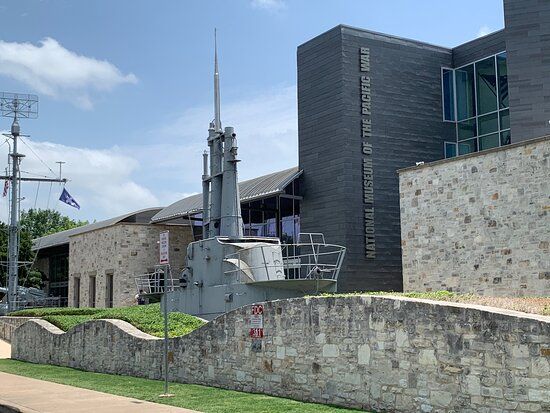
The National Museum of Pacific War in downtown Fredericksburg is voted one of the best history museums in the US and is right here in Fredericksburg, TX. The connection – the museum is located in the historic Nimitz Hotel, the boyhood home of Admiral Chester W. Nimitz, a leader in the Pacific War.
The museum tells the story of Admiral Chester Nimitz and how World War II was won in the Pacific with World War II exhibits, photographs and artifacts, detailed personal accounts of the war, and live reenactments and events. Top attractions include the Admiral Nimitz Gallery, George Bush Gallery of the Pacific War, the Plaza of Presidents, Japanese Garden of Peace, Memorial Walk, and Pacific Combat Zone.